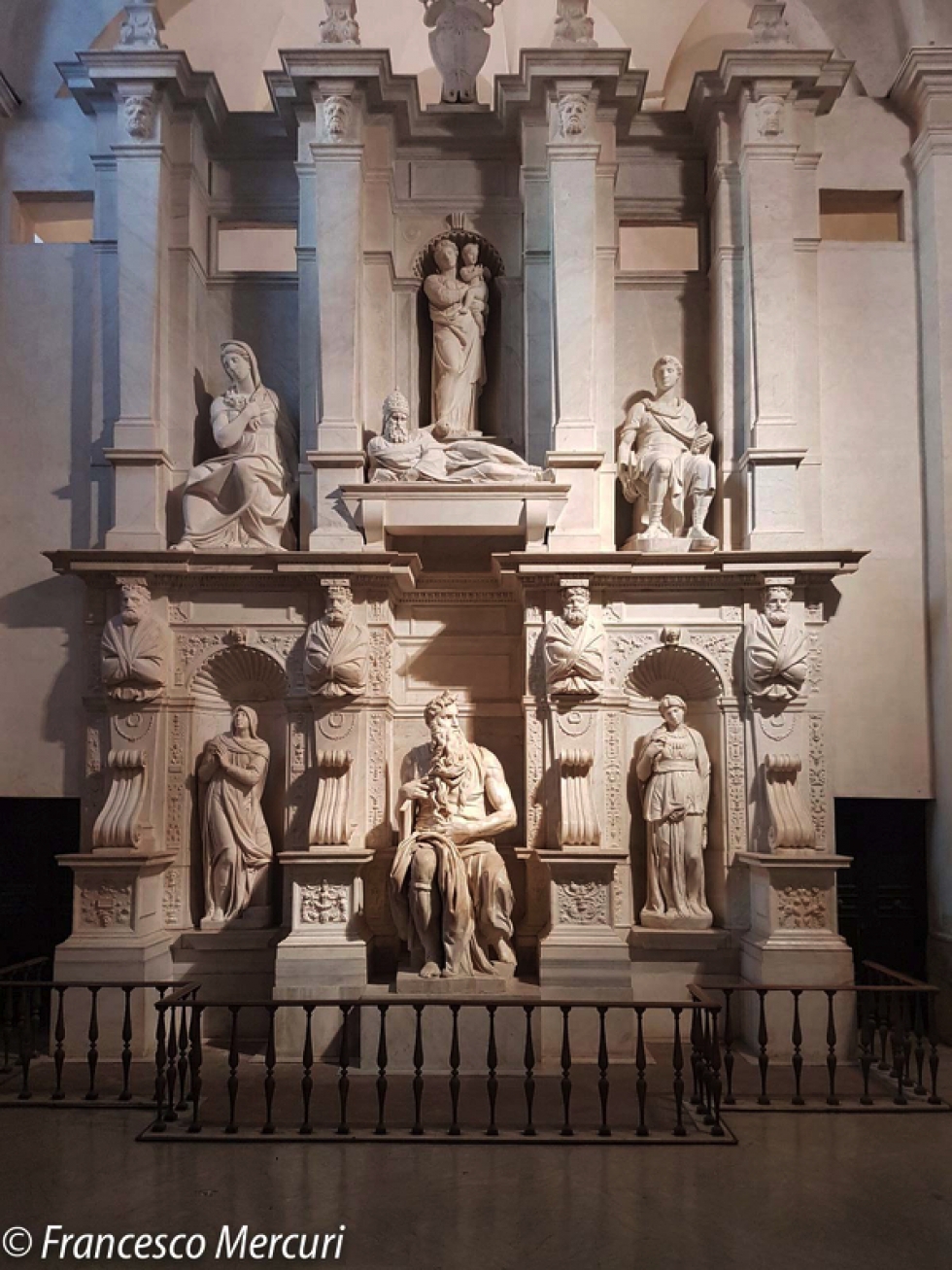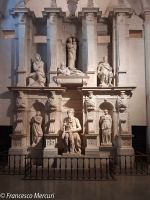One of the greatest masterpieces of the history of art is the Moses by Michelangelo. Extraordinary work of the Renaissance, it is the most important sculpture in the tomb of Julius II, in the church of Saint Peter in Vincoli. It was sculpted by the Tuscan artist between 1513 and 1516, and it represents the central element of this amazing mausoleum that started to host the remains of the pontiff almost a century after his death, which took place February 21st, 1513.
Michelangelo was called by the pope himself, at the beginning of 1505, to realise this artwork, and he was very excited about having such a prestigious job. After signing the contract, indeed, he spent 8 months in Carrara to personally choose the best marbles to use. When he came back to Rome, though, Julius II informed Michelangelo that he wanted him to immediately work on other projects, so, disappointed with this behavior (famous the passionate personality of the Tuscan genius), he ran away from Rome to Florence. Only the threats of the pope on the Florentine Republic succeeded in convincing Buonarroti to move back to Rome to paint the ceiling of the Sistine chapel, as required by the pontiff. Once he had accomplished this challenge, he could finally completely dedicate his time to the carving of the Moses. This sculpture represents the Jewish patriarch sitting and holding, with his right arm, the tablets of law he received on Mount Sinai, while directing his gaze towards his left, looking scornfully at Jews worshipping pagan gods. The marble giant, 2.35 meters tall, was conceived by the master as a static seating figure with a straight gaze pointing towards the altar. What makes it astonishing is that it was sculpted exactly that way. According to a document found not many years ago, Michelangelo, 25 years after the completion of the statue, decided to “turn” it, making Moses look to his left. Technical difficulties to make a stone giant turn must have been immense. The long beard was “stretched” towards the right, since on the left there wouldn’t have been enough marble to carve it again. Moreover, to “allow” movement, he lowered the throne on which Moses was seated of about 7 centimeters, and carved some marble away from the left leg, making the knee slide backwards. In order to cover the lack of stone and the loss of ratio, he made up a drape to partially cover the left leg. Only the brilliant Michelangelo could make a statue turn! In this way, Moses doesn’t appear static anymore, but rather dynamic, almost trying to stand up. He communicates strength and severity through his terrible gaze, that, according to some scholars, reflects the personality of the artist. The reasons why the great Buonarroti operated on the statue after so many years are still unknown and a matter of speculation. Maybe they are related to his strong religious devotion. Was it too disrespectful, or blasphemous, for the artist to have the Jewish patriarch harshly look at the main altar containing a shrine with S. Peter’s chains from his captivity (both from the period in Rome and from the period in Jerusalem)? Another extremely curious element are the “horns” of Moses. They are the result of a wrong interpretation of a Hebrew term in the Bible. This mistake, at the time Michelangelo carved the Moses, had already been recognized and corrected. Nevertheless, since in the past centuries, especially in numerous paintings, the patriarch was represented this way, the artist decided to continue the tradition. Finally, there is a unique and creative legend linked to the Moses. Apparently, some time after the completion of the work, Michelangelo, addressing his statue, said: “Why don’t you talk?”, and, naturally, not receiving any answer, he threw a chisel at it, hitting it on the knee. Of course, this episode is completely fictional, but it shows how the artist perceived his work as a masterpiece missing only the power of speech. And he was right.
Giuseppe Rosselli











